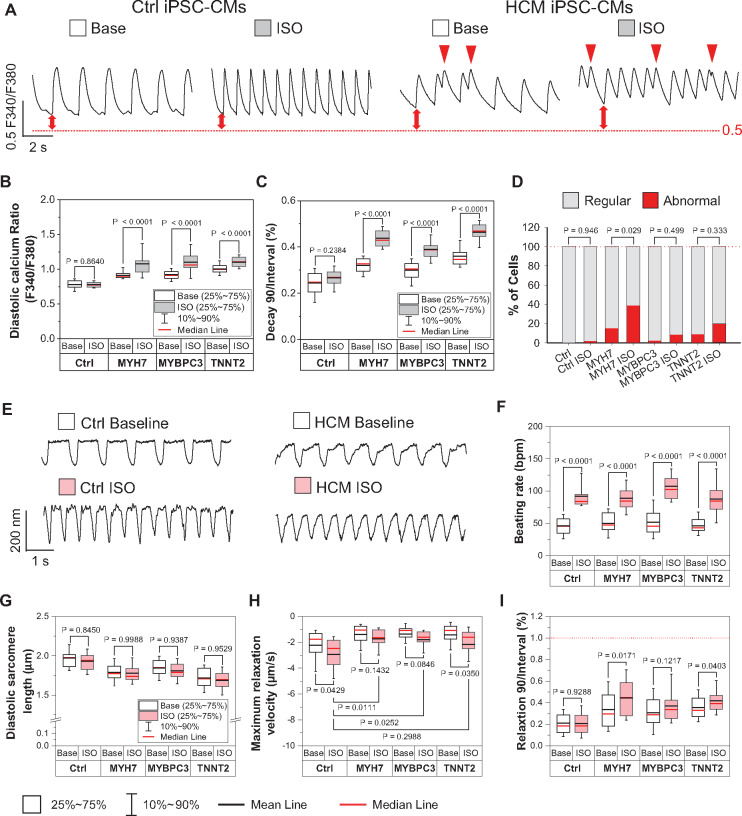Figure 4.
Short term β-adrenergic challenge exaggerates diastolic dysfunction in hypertrophic cardiomyopathy (HCM) induced pluripotent stem cell-derived cardiomyocytes (iPSC-CMs). (A) Representative traces of Fura-2 AM Ca2+ imaging of Ctrl and HCM iPSC-CMs with or without isoproterenol (ISO) treatment. Red arrow indicates abnormal Ca2+ handling events. (B and C) ISO challenge further enhanced diastolic Ca2+ concentrations and significantly prolonged the normalized transient decay times in HCM iPSC-CMs compared with non-ISO groups by two-way ANOVA (Holm–Sidak method). N > 31 cells in each group. (D) Percentage of abnormal Ca2+ handling events. N > 28 cells in each group. All groups were compared with non-ISO groups by z-test. (E) Representative traces of sarcomere shortening measurement in Ctrl and HCM iPSC-CMs with or without ISO treatment. (F–I) ISO increased beating rate in both Ctrl and HCM iPSC-CMs (F), yet HCM iPSC-CMs still showed shorter diastolic sarcomere length (G), slower relaxation velocity (H), and further prolonged relative relaxation duration (relaxation duration 90 normalized to the beating interval) in HCM iPSC-CMs after ISO treatment (I). All groups were compared with non-ISO group by two-way ANOVA (Holm–Sidak method). N > 28 cells in each group. For all the groups, data were generated from two different iPSC lines and three batches of differentiation.

